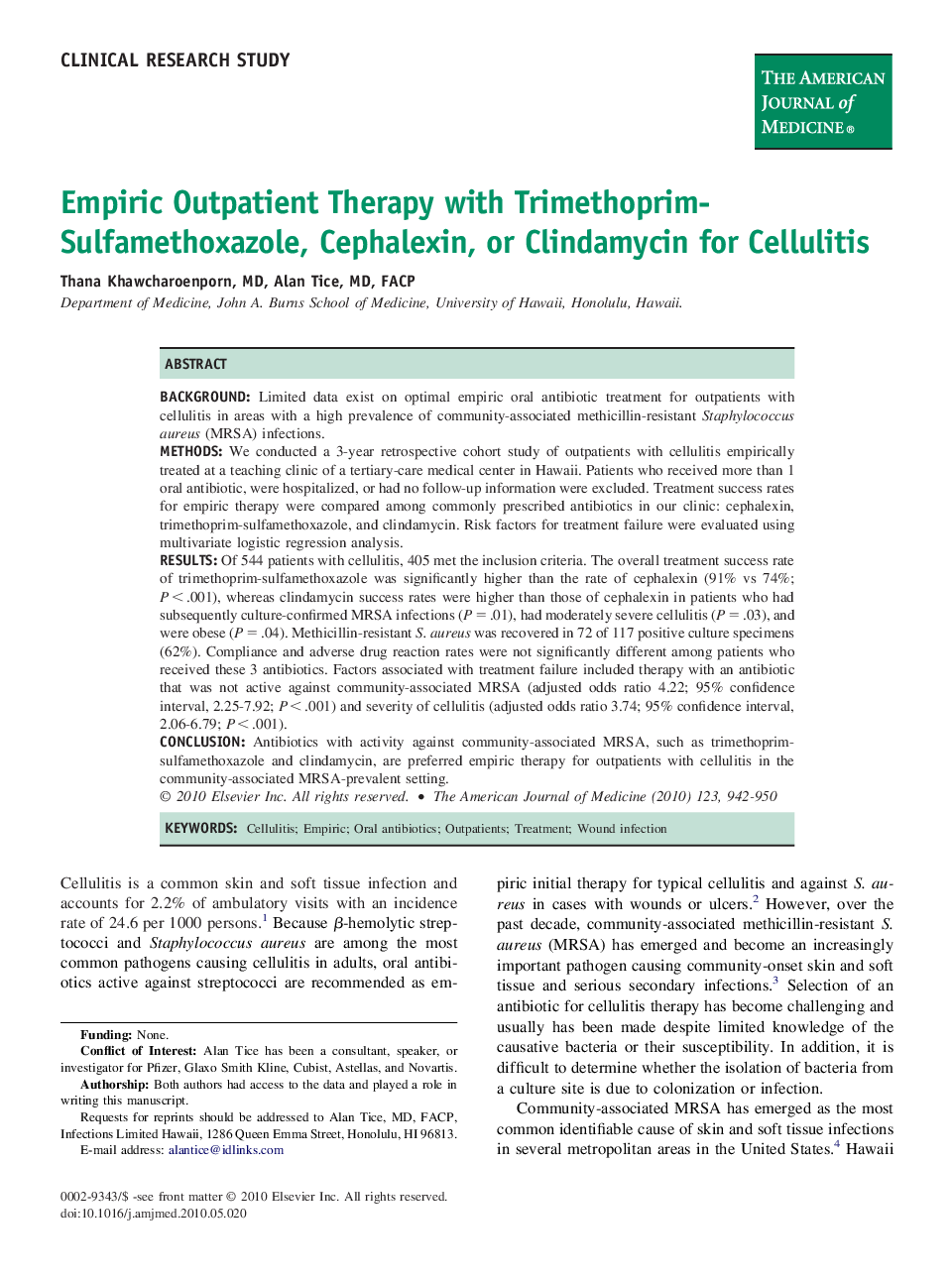| کد مقاله | کد نشریه | سال انتشار | مقاله انگلیسی | نسخه تمام متن |
|---|---|---|---|---|
| 2725552 | 1566190 | 2010 | 9 صفحه PDF | دانلود رایگان |

BackgroundLimited data exist on optimal empiric oral antibiotic treatment for outpatients with cellulitis in areas with a high prevalence of community-associated methicillin-resistant Staphylococcus aureus (MRSA) infections.MethodsWe conducted a 3-year retrospective cohort study of outpatients with cellulitis empirically treated at a teaching clinic of a tertiary-care medical center in Hawaii. Patients who received more than 1 oral antibiotic, were hospitalized, or had no follow-up information were excluded. Treatment success rates for empiric therapy were compared among commonly prescribed antibiotics in our clinic: cephalexin, trimethoprim-sulfamethoxazole, and clindamycin. Risk factors for treatment failure were evaluated using multivariate logistic regression analysis.ResultsOf 544 patients with cellulitis, 405 met the inclusion criteria. The overall treatment success rate of trimethoprim-sulfamethoxazole was significantly higher than the rate of cephalexin (91% vs 74%; P < .001), whereas clindamycin success rates were higher than those of cephalexin in patients who had subsequently culture-confirmed MRSA infections (P = .01), had moderately severe cellulitis (P = .03), and were obese (P = .04). Methicillin-resistant S. aureus was recovered in 72 of 117 positive culture specimens (62%). Compliance and adverse drug reaction rates were not significantly different among patients who received these 3 antibiotics. Factors associated with treatment failure included therapy with an antibiotic that was not active against community-associated MRSA (adjusted odds ratio 4.22; 95% confidence interval, 2.25-7.92; P < .001) and severity of cellulitis (adjusted odds ratio 3.74; 95% confidence interval, 2.06-6.79; P < .001).ConclusionAntibiotics with activity against community-associated MRSA, such as trimethoprim-sulfamethoxazole and clindamycin, are preferred empiric therapy for outpatients with cellulitis in the community-associated MRSA-prevalent setting.
Journal: The American Journal of Medicine - Volume 123, Issue 10, October 2010, Pages 942–950